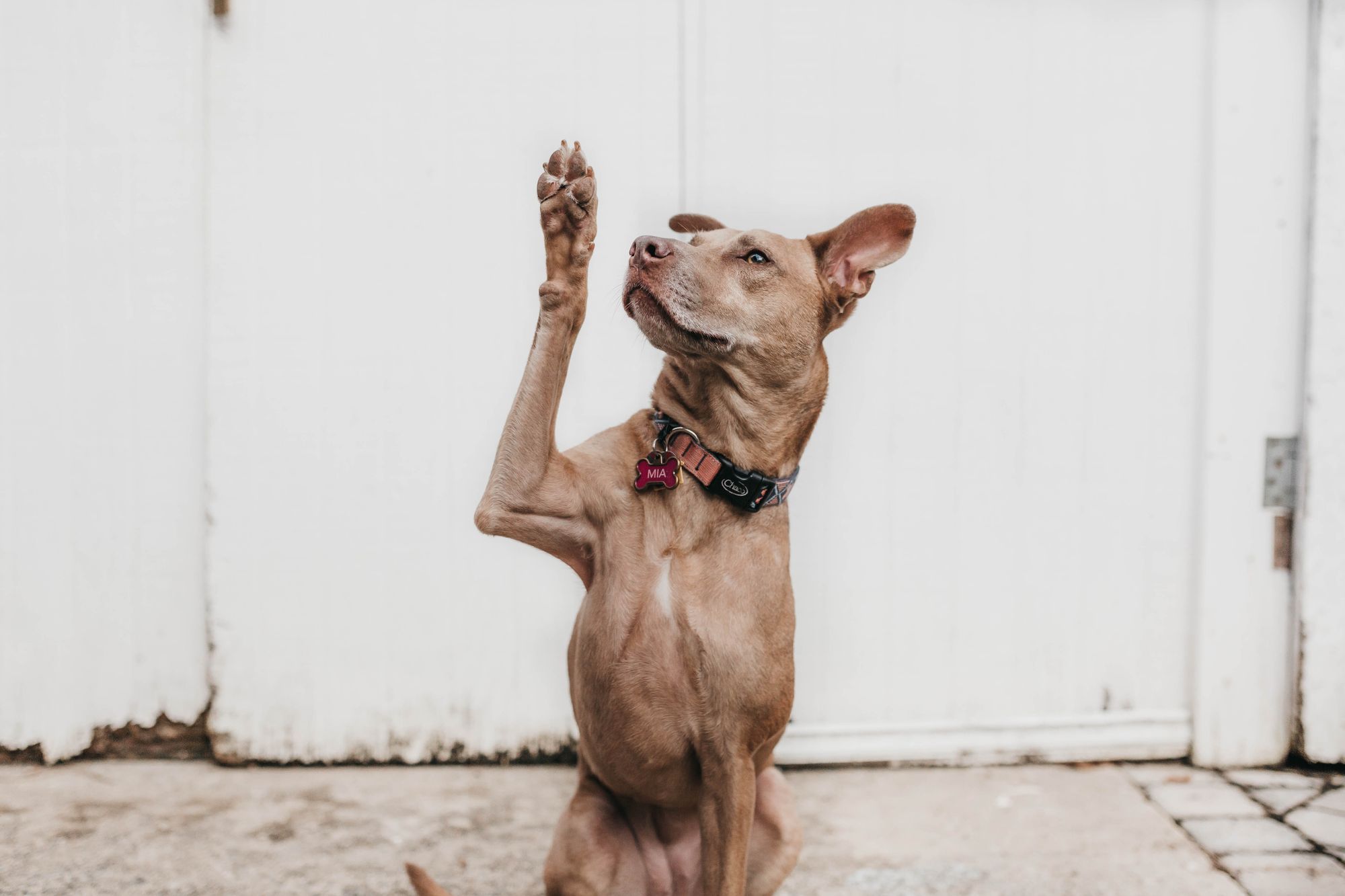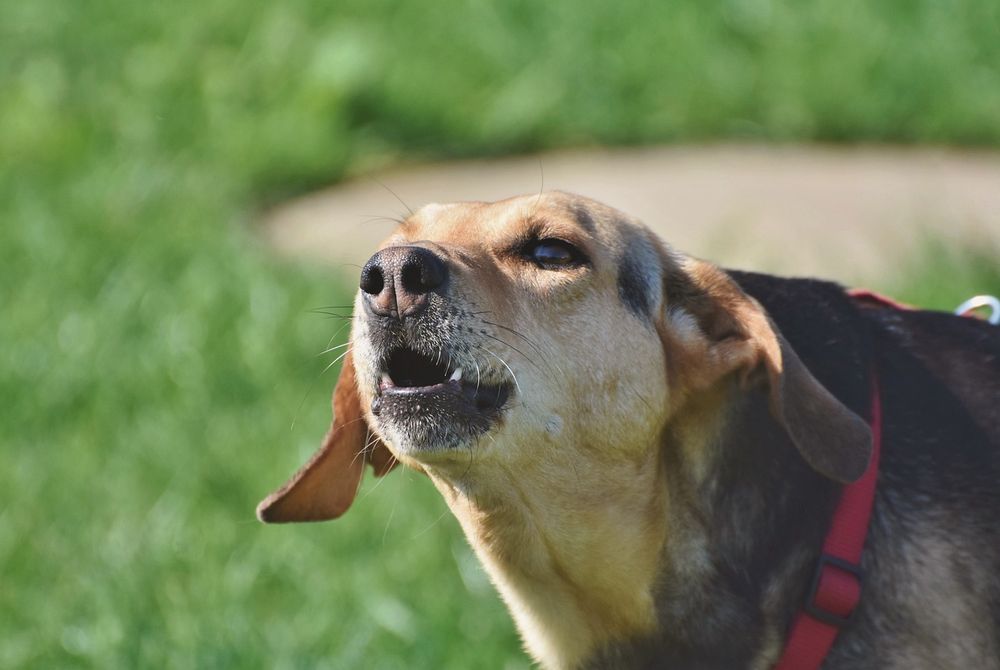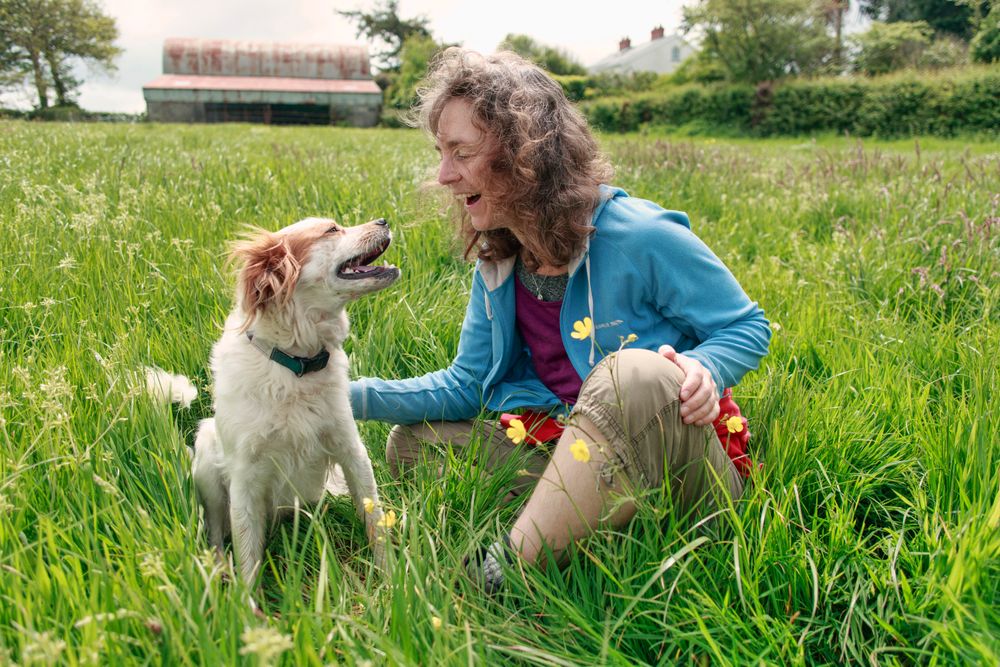Dogs communicate with us and each other primarily through body language, and many behavior issues stem from humans misinterpreting what their dogs are trying to say. To become proficient at interpreting your dog’s body language, the first step is to observe. This article will:
- Teach you how to interpret what your dog is trying to tell you
- Provide a general guide for understanding your dog’s stress levels
- Share what other pet parents are asking about body language
What is your dog trying to tell you?
When trying to interpret your dog’s body language, it's crucial to take a holistic approach. To do this, you will need to consider their entire body and the context of the situation. More specifically, look at:
Orientation and placement
- By asking questions such as, "Where is my dog looking? Where is their body pointing? Where is my dog in the current space? Where are they in relation to me?", you can gain valuable insights into your dog's current state of mind. In most cases, the direction of your dog's gaze and body position will indicate their primary focal point or motivator in the environment at that moment
Weight
- Centered weight generally indicates baseline or resting state
- Weight shifted forward generally indicates confidence towards the stimuli
- Weight shifted backwards generally indicates uncertainty towards the stimuli
- Leaning towards something is likely a dog who is more confidently interested
- Leaning away from something indicates a dog who is likely less confident
Posture
- A dog standing tall is generally confident and assertive
- A dog with a lowered body is generally less confident and uncertain
Ears
- Natural/relaxed ears look different in each dog, but there will be no tension where the head and ears meet
- Semi-erect ears are turned in a specific direction, up halfway. These ears often signal that your dog is orienting towards something specific
- Up/forward ears signal alertness or confidence. Look at where the ears meet the base of the skull; this will help you understand dogs with cropped or floppy ears.
- Out-to-the-side / airplane wing ears will be out to the side. This signals uncertainty, conflict, mixed emotions.
- Back ears (not pinned back) that are farther back than the natural/relaxed position signals appeasement, caution and/or submission.
- Flat or pinned back ears (all the way back) signal submission, uncertainty, defensiveness and fear.
Eyes
- Soft eyes are eyes that appear partially closed and can look almost squinty. These are usually seen with little to no facial tension, and signals that your dog is feeling relaxed.
- Hard eyes are eyes that are wider than usual, almost look frozen, and are accompanied by facial tension. These types of eyes signal stress and that your dog is feeling threatened.
- "Whale eyes" are eyes with a lot of visible whites around the pupil because the eyes are open so wide. These types of eyes are often accompanied by facial tension and can indicate that your dog feels stressed or threatened.
- Dilated pupils can indicate high stress or arousal. These eyes can be hard to spot in dogs with dark colored eyes, and can also be misinterpreted in low light.
Mouth
- Short mouth: Your dog’s mouth will look shorter, their lips will be drawn forward making their mouth look smaller (“C shaped”), and you will see tension in their face. This type of mouth can be a threat.
- Snarl / lip curl / agonistic pucker. Your dog’s mouth will look short and their upper lip will be retracted. You’ll see your dog’s canines and this is a threat.
- Submissive Grin. The front of your dog’s lips (under their nose) will be raised and their nose will typically look “wrinkly”. This type of mouth signals appeasement or submission, but is often misunderstood as a threat or mistakenly labeled as a snarl. To feel confident that your dog is showing a submissive grin, look for other signs or appeasement or submission.
- Long mouth. The corners of your dog’s mouth will be pulled back in the direction of their neck, and their mouth will look longer (“U shaped”). If your dog has little to no facial tension, you can interpret that your dog is relaxed. If your dog has facial tension, or is panting, you can interpret that your dog is stressed.
Tail positions
- Natural. You need to know your dog’s natural carriage (i.e. where is your dog’s tail when they’re relaxing) in order to establish a baseline to understand other tail positions.
- Level. Tail is even with the spine. This is often the dog’s natural carriage.
- Lowered. Tail is below spine level. Depending on the context of the situation, this tail position could mean that your dog is feeling: relaxed, low confidence, submissive, cautious, uncertain.
- Tucked. Tucked tail is underneath the belly and covers the anus. This tail position signals that your dog is feeling defensive, submissive, or afraid.
- Raised. A raised tail is above spine level and signals that your dog is feeling alert, confident and/or aroused.
- Raised High. Raised high above spine level and angled forward sometimes. This tail position signals high confidence and high arousal.
“Hackles up” or piloerection
- Hair near shoulders or at the base of the tail is puffed up.
- Medical Definition: involuntary erection or bristling of hairs due to a sympathetic reflex usually triggered by cold, shock, or fright or due to a sympathomimetic agent.
- Does not always predict aggression, but is often associated with arousal.
Tail wagging - position
- Remember that not all tail wagging is friendly! Look at the entire body in order to best interpret your dog’s wagging tail.
- High tail wag can indicate more confidence, arousal, assertiveness. Tight, high circles = proceed with caution!
- Low tail wag can indicate more relaxed, possibly appeasement or submission.
- Tucked tail wag can indicate appeasement or submission.
Tail wagging - speed
- Faster speed wag indicates higher arousal
- Slower speed tail usually indicates less arousal, less intensity
- Slower, larger wags usually means your dog is feeling more comfortable and relaxed
- Stiff or frozen tail = tension, threat!

A general guide for understanding stress levels
Stress is a physiological response to challenging or threatening situations, and it can have a significant impact on your dog's behavior, health, and overall well being. As a result, recognizing your dog’s stress signals is essential and can help you improve your dog's behavior and overall quality of life. With this in mind, we’ve put together a quick list of behaviors to help you understand when your dog is experiencing low, medium and high levels of stress.
Low levels of stress
- Averted eyes/averted head
- Blinking
- Ears back
- Repeated stretching
- Tongue flicks (lip licks)
- Scratching
- Self-sniffing or licking
- Shake off
- Sneezing
- Yawning
- Weight centered backward
Medium levels of stress
- Hard eyes
- Hyper-vigilance
- Leaning away
- Low tail
- Mild facial tension ridges
- Moving away
- Repeated tongue flicks (lip licks)
- Slow approach
- Stiff muscles/body
- Whining
- Whites in the eye
High levels of stress
- Drooling
- Escape attempts/running away (flight)
- Freezing
- Pacing
- Panting
- “Pancaking” or flattening
- Repeated, loud whining or yelping
- Sweaty paws
- Tight, numerous facial tension ridges
- Trembling
- Tucked tail
Frequently asked questions about a dog’s body language
What is positive dog body language?
Positive body language in dogs indicates that they are feeling relaxed, happy, and comfortable in their environment. Some examples of positive dog body language include:
- A relaxed body without any signs of tension or stiffness.
- Ears in a neutral position
- Soft or relaxed eyes without any tension their face
To better understand how your dog is feeling, remember to look at your dog’s entire body language in the context of the situation they’re in.
Why do dogs lick you?
Your dog may lick you because they’re:
- Trying to bond and show affection
- Trying to clean you (often seen in puppies who learn to groom themselves and each other through licking)
- Acting submissive and feeling intimidated or fearful
- Trying to get your attention
- Feeling anxious
How do dogs say sorry?
Dogs do not have the same cognitive abilities as humans and are not capable of feeling guilt or apologizing in the same way that humans do. However, dogs are very good at responding to our emotional cues and can learn to modify their behavior based on our reactions. For example, if a dog has done something that upsets their owner, such as chewing on furniture or jumping on someone, they may exhibit submissive behavior such as cowering, avoiding eye contact, or licking. This is not a sign of guilt or apology, but rather a response to their owner's emotional state.




